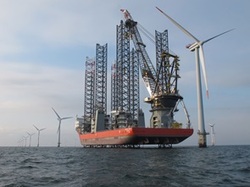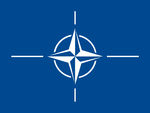News Release from FORCE Technology
Wind Industry Profile of
Presentation from Offshore Dialogue at SMM 2016
This presentation will address a few fundamental aspects of simulator based training and engineering. How it can be used to develop technical handlings skills and how this competence building can be augmented by introducing psychometric tests for assessment of and safety awareness at an individual level. Something which is becoming more and more important – both at team level and on a more individual level.
An efficient training environment
The use of virtual based training is well established and if applied correctly the value is very apparent, but the opposite could also be said if approached incorrectly. Four elements are crucial when working in virtual environments:
- simulator hardware
- mathematical models
- instructors
- training methods
The degree of simulator hardware is important. The hardware must be flexible and have instruments, handles and communication systems which are easy to integrate and at the same time feel and look realistic. This ensures that the user does not use unnecessary mental resources to adapt to the simulator and vice versa when going back to the actual physical environment. Cues, such as wakes behind buoys, flags and similar tell-tails are important.
The mathematical models or simulator engines must obviously be accurate and represent all relevant physical phenomena correctly. The accuracy is achieved when the simulator model builder is able to integrate what is considered the most valid data from a selection of real data from e.g. sea trails, tank tests, CFD, extrapolation from other similar models using neural networks and so forth If the simulator differs from the real world, then the impact could be negative and affect safety and efficiency. This is known as negative training.
The instructor must be able to teach, guide and motivate and should preferably have experience from operations similar to the trainees. The role must support the training process by guiding the participants, providing knowledge and being able to observe where the individual participant needs support to reach a higher skill and knowledge level. Also to support in ‘forgetting’ that the training is conducted in a virtual environment.
The training methods dictate the difference. It is not sufficient to select “the best” captain to train professional mariners. Understanding the potential of simulator based training, the most efficient method has proven to be the participant logical approach and applying pedagogical best practice.
Debriefing sessions are an essential part of training but are only useful if there is sufficient time for reflection. The mantra is: no reflection, no learning! A very efficient method which ensures high learning transfer relies on four different types of questions. This method is often referred to as Discovery Learning, Circular Questioning Technique or Inquiry Method.
Current situation
The skills achieved after one year aboard a vessel can be achieved in just one week in a simulator when done properly. This is a common statement. It is not an objective measure but an indication of how much can be gained. But also a statement which makes sense.
Would it therefor – rules aside - not make sense to abolish on board training or reduce it to a minimum? Hardly. On board training is real time. It is life in itself. And that implies long working hours, hard work, noise, harsh weather, odd hours and many other issues. In reality onboard training not only develops skills but also social competences training of which cannot be accelerated.
The overall aim of using simulators is to keep operations safe, efficient and profitable.
When crew members engage in real life situations or training, each of them show up with a specific personality:
- Social abilities, learning approach
- Behavioural patterns during stressful situations (Flight, Fight, Freeze)
- Safety profile
These personality characteristics form, in combination with a certain level of ability, an unique profile for each crew member.
Professional training must consider the different profiles by mapping them and use the outcome proactively.
Where are we headed?
As technology develops simulators get faster and more efficient. This stimulates a trend to integrate other related functions. This leads to the concept of Live Virtual Constructive training where an actual physical vessel can be surrounded by virtual vessels which indeed open up for some interesting opportunities.
Imagine a lift-ship chartered to undertake a difficult operation. It has to operate close to a rig and the weather is rough. The entire operation may be created in a simulator where a drill down of all the procedures is rehearsed and rehearsed. This works.
This could also be done aboard the vessel using augmented reality, that is, the rig could be placed in a virtual environment surrounding the actual vessel. This would enable the vessel to perform the operation and interact with the rig without the rig being there. This could create a very interesting scenario. The question is however how relevant is it? The scenario lacks the hydro- or aerodynamic interaction with the vessel as well as the possibility to ‘adjust’ the environment to test critical situations and thereby pursue the performance envelope. So although it is the real vessel it might not really provide quality training and then again it is much more expensive. That said there may be other scenarios where the LVCT approach makes sense.
To sum up
The combination of a simulator based training, personality profile, safety profile and measures of abilities is quite unique and paves the way for better safety records, reduced costs and better exploitation of weather windows. We will see simulator and domain connectivity evolve. We will see gaming like environments continue to evolve if we stay true to the underlying physics.
- Source:
- Force Technology
- Link:
- www.forcetechnology.com/...
- Keywords:
- offshore, Force, training























